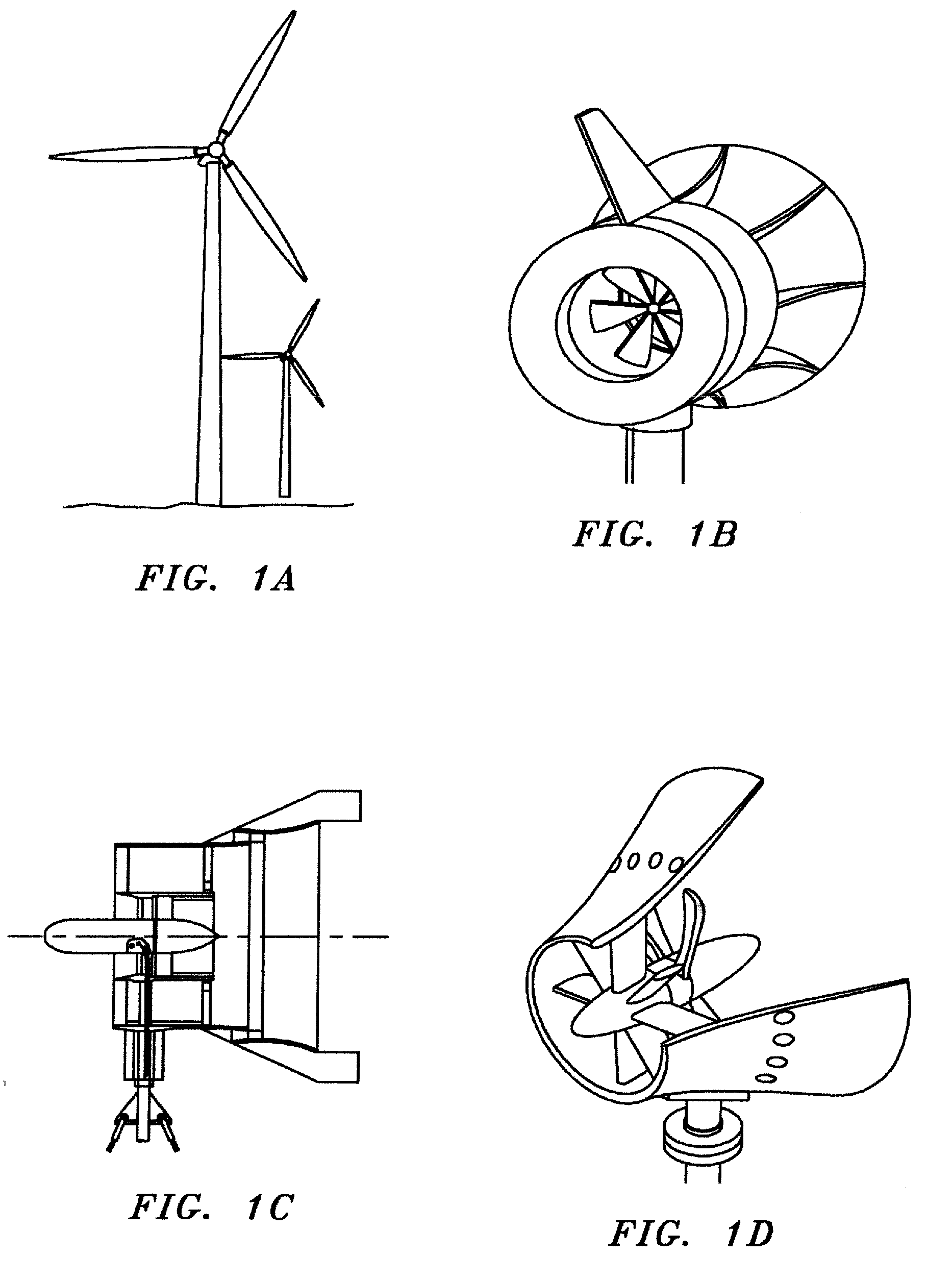Wind turbine with mixers and ejectors
a wind turbine and mixer technology, applied in the direction of machines/engines, stators, liquid fuel engines, etc., can solve the problems of significant bird strikes and kills, poor performance at low wind speed, irritating pulsating noise, etc., and achieve the effect of increasing the productivity of wind farms
- Summary
- Abstract
- Description
- Claims
- Application Information
AI Technical Summary
Benefits of technology
Problems solved by technology
Method used
Image
Examples
Embodiment Construction
[0067]In a one-dimensional actuator disc model, the turbine or propeller's effect is taken as a discontinuous extraction or addition of power. FIG. 27 provides the geometry and nomenclature for the more general ducted case. The unducted case is recovered when the duct size and the attendant force Fs are allowed to shrink to zero. Using a control volume analysis that includes the turbine / propeller blade as a discontinuity as well as the inflows and outflows at upstream and downstream infinity, the conservation of mass, momentum and energy for a low speed and / or incompressible fluid leads to the equations for power and thrust as:
PowerP=14ρAp(Vo2-Va2)(Vo+Va)Equation(1)ThrustT=2P / (Vo+Va)Equation(2)
[0068]The equations are first presented in dimensional form and later non-dimensionalized per their application. As seen, there are four variables, power P, thrust T, free stream velocity, Va and the downstream core velocity, Vo. For wind / water turbines, only forward velocity Va is known thus ...
PUM
 Login to View More
Login to View More Abstract
Description
Claims
Application Information
 Login to View More
Login to View More - R&D
- Intellectual Property
- Life Sciences
- Materials
- Tech Scout
- Unparalleled Data Quality
- Higher Quality Content
- 60% Fewer Hallucinations
Browse by: Latest US Patents, China's latest patents, Technical Efficacy Thesaurus, Application Domain, Technology Topic, Popular Technical Reports.
© 2025 PatSnap. All rights reserved.Legal|Privacy policy|Modern Slavery Act Transparency Statement|Sitemap|About US| Contact US: help@patsnap.com



